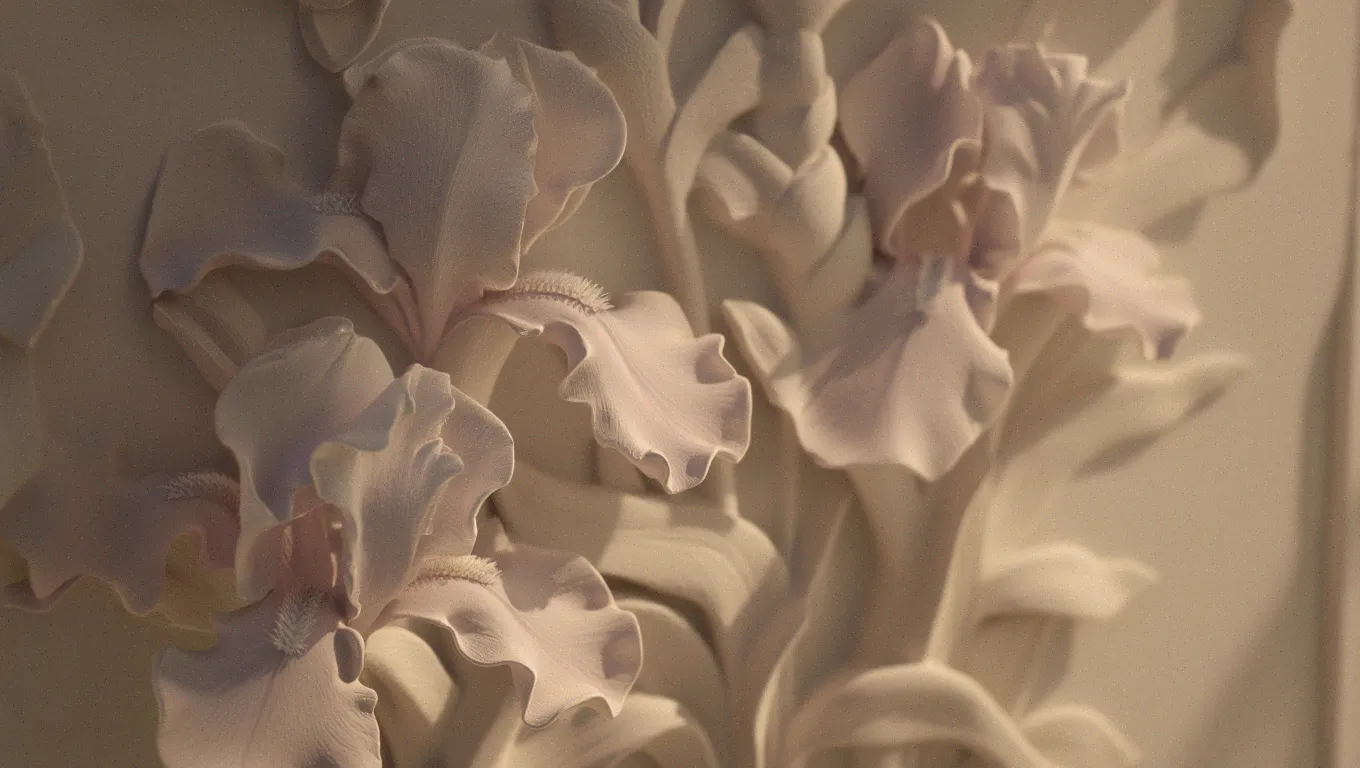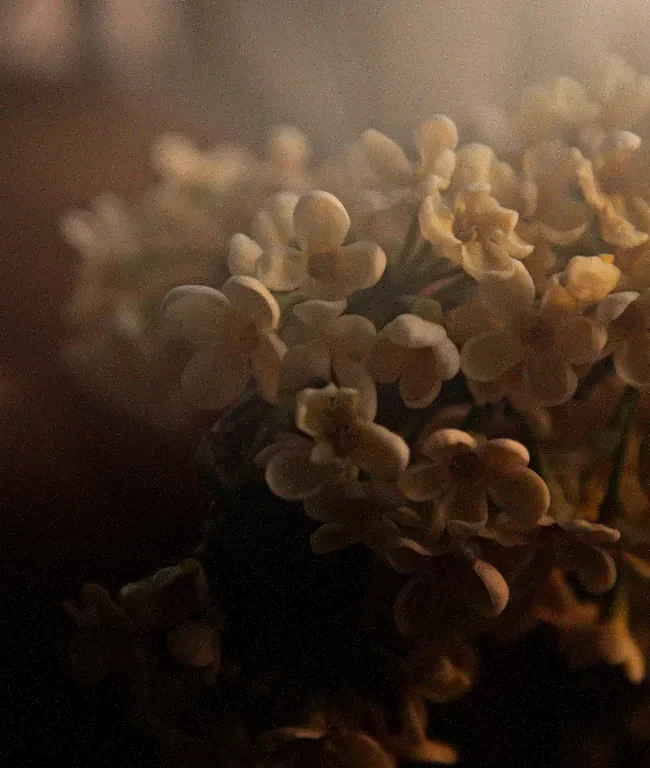
The Sensory Architecture of Scent: Decoding Olfactory Texture
The true mastery of perfumery extends beyond the mere combination of aromatic notes; it lies in the architectonic control of olfactory texture. This dimension describes precisely how a fragrance feels in the nose—its density, sheen, resistance, or dryness—translating abstract sensory phenomena into tactile perception. Olfactory texture is the structural quality of the composition, existing independently of its primary family (e.g., a woody scent can be sharp or creamy; a floral can be sparkling or dusty).
For the professional perfumer, texture is fundamentally an architectural decision. It governs the composition’s volume, the dynamics of its flow, and its overall temporal narrative. A well-crafted fragrance is recognized not just for its initial aroma but for the dynamic way its olfactory texture “changes with the hours,” revealing depth and sophistication as lighter molecules evaporate. While the language of texture—employing evocative terms like ‘crisp,’ ‘rubbery,’ ‘velvety,’ or ‘metallic’—may seem poetic, these descriptors are crucial communication points between perfumer and evaluator, defining the desired physical experience and structural integrity of the final composition.
Part I: The Synesthetic Foundation of Texture Perception
A. Cross-Modal Translation: Linking Olfaction to Somatosensation
The concept of olfactory texture is scientifically grounded in the phenomenon of cross-modal correspondence, often experienced as synesthesia. This occurs because the olfactory pathway is deeply integrated with centers responsible for cognitive and sensory processing, including the somatosensory cortex. The human brain constantly attempts to map the invisible, gaseous stimulus of scent onto known physical properties.
Research confirms robust interactions between texture and odor: studies have shown that the presence of specific odors can measurably influence the perceived tactile softness of visually obstructed cotton fabrics. This perceptual interaction between food texture and odor is observed at both primary-sensory and cognitive evaluative levels of processing. This neurological interplay drives the expansion of the perfumery lexicon beyond simple odor notes into descriptions borrowed from tactile, gustatory, and auditory domains. Terms such as ‘chewy,’ ‘gummy,’ ‘waxy,’ ‘astringent,’ or ‘billowy’ are deployed to quantify the perceived viscosity, sharpness, or volume of a scent.
Since odor perception can demonstrably modify the perception of material quality, it follows that the perfumer, through texture design, is essentially crafting the materiality of a sensory experience. This perspective elevates scent design to a form of multi-sensory architecture, which has led to specialized research programs, such as the development of the Scentograph™ tool for matching scent qualities with visual and tactile elements in architectural design. The sophisticated control over texture allows the fragrance to transcend mere pleasant smell and become an immersive sensory journey or a “collective experience” where sensoriality and art merge.
B. Density, Volume, and Flow: Interpreting Molecular Weight as Aesthetic Weight
The perceived texture directly informs the composition’s ‘aura’ or overall volume. Fragrances described as having significant textural density often rely on heavy fixatives and bases, resulting in a composition with a lack of bright top notes, minimal evolution, and notable longevity. These dense structures prioritize sheer, persistent impact.
While traditional wisdom dictates that perceived textural weight correlates with the molecular weight of the raw materials—suggesting that heavier molecules linger longer and create a denser scent trail—the technical reality is more nuanced. The rate of diffusion of fragrance molecules, which ultimately defines the lightness, sillage, and volume of the scent, is complex. Research indicates that the diffusion rate is not simply dependent on the molecule’s molecular weight or boiling point, but on complex interactions between the molecule, the substrate (skin or fabric), and environmental conditions such as temperature and humidity.
This technical complexity creates a critical design tension: whether to create a composition with a static, monolithic texture or one that exhibits dynamic movement. Static textures, composed of highly non-volatile materials, offer density and longevity but may lack temporal interest. Conversely, dynamic textures require materials with varied evaporation rates, creating what is described as “movement”—an olfactory progression that “changes with the hours”. The selection between a linear, persistent textural experience and a fluid, evolving one fundamentally shapes the narrative structure of the fragrance.
Part II: The Architectural Palette: A Lexicon of Textural Effects
Perfumery employs a vast textural palette, broadly categorized into soft, hard, and dense/viscous effects. Mastery involves selecting the appropriate contrast to bring definition and life to the composition.
A. Soft Textures: The Enveloping Veil
Soft textures are typically associated with a matte, dry finish, often evoking comfort, nostalgia, and closeness.
- Powdery/Talc-like: This is the quintessential soft texture, conveying a delicate, dry, and clean sensation, reminiscent of fine talcum powder or vintage face makeup. It is highly sought after for its elegance and comforting quality.
- Velvety: Implies a plush, deep softness that is rich and smooth. Velvety textures are frequently achieved by pairing opulent flowers, such as rose or osmanthus, with complex base notes like amber, woods, or subtle suede leather.
- Billowy: Suggests an expansive, yet light mass, achieving a significant volume without the heavy anchor of dense, sticky materials.
B. Hard Textures: The Cutting Edge
Hard textures provide necessary structural contrast and are perceived as bright, cool, or sharp.
- Crisp/Sparkling: This texture conveys effervescence, cleanness, and a cool sensation—like the feeling of “cold ginger ale” or the fresh snap of laundry. Highly volatile, this texture delivers an instant burst upon application.
- Metallic/Shiny: This abstract texture imparts a “glinting sheen that cuts through a composition”. Depending on the application, it can suggest the cool, otherworldly nature of a cold knife or the warm, luxurious glow of molten gold, providing a structural backbone to the heart of the scent.
- Astringent/Sharp: A texture characterized by a very sharp, sometimes medicinal quality, often arising from high concentrations of volatile molecules, such as sharp citruses or specific lavender profiles.
C. Dense and Viscous Textures: The Resistance
These textures are critical for anchoring the base, indicating high molecular weight and low volatility, conveying warmth and persistence.
- Resinous: Warm, slightly sticky, and often possessing a deeper, woodier quality than amber. This density often results from solvent extraction processes that yield resinoids, contributing “richness, density, and signature” to a perfume.
- Rubbery: A specific textural characteristic observed in highly concentrated natural extracts, such as Oakmoss Absolute (Evernia prunastri), whose texture is described as being “rubbery when wet” and rough when dry. This attribute provides a unique, resistant viscosity in the deepest base.
- Waxy: This texture is often associated with the fatty, dense characteristics of certain fixatives or specific aliphatic aldehydes, contributing a heavy, structural quality.
A sophisticated fragrance composition rarely utilizes a single texture. Instead, complexity and structure are achieved through dynamic contrast—the setting of a “cool, clean texture” (Crisp) against a “warm, soft” one (Velvety). This dynamic interplay generates an active “grapple between opposing forces” within the fragrance, ensuring movement and preventing a flat sensory experience. Furthermore, the presence of certain textural descriptors, particularly dense and viscous ones, often reflects the use of complex natural extracts. The inherent ‘rubbery’ viscosity of a natural Oakmoss Absolute extract contrasts sharply with the precision but often lower density of a purely synthetic reconstruction, illustrating how the choice of raw material processing dictates the available textural palette.
For a more accessible introduction to these textural concepts and their experiential qualities, see our companion article: Texture in Fragrance: Exploring Powdery, Creamy, Crisp & Beyond.
The following table summarizes the most common textural effects and their molecular constructors:
Olfactory Textural Lexicon and Molecular Constructors
| Olfactory Texture | Sensory/Tactile Impression | Key Materials/Molecules | Technical Function & Effect |
|---|---|---|---|
| Powdery/Fluffy | Dry, soft, talc-like, cosmetic, matte | Orris Butter, Heliotropin, Ionones, Clean White Musks, Aldehydes | Creates volume, nostalgia; controls diffusion rate for soft drydown. |
| Crisp/Sparkling | Cold, sharp, effervescent, clean, wet | Aliphatic Aldehydes (C8-C12), Citral, Galbanum resin, Green notes | High volatility, immediate burst/lift; provides structural contrast and brightness. |
| Metallic/Shiny | Gleaming, cool, cutting, reflective, slick | Synthetic Iris notes, Ambroxan/Cetalox, Aldehydes (C9) | Structural backbone; imparts a sheen that cuts through heavier accords. |
| Resinous/Dense | Warm, viscous, sticky, heavy, enveloping | Resinoids (Benzoin), Absolutes (Oakmoss, Patchouli), Amber Accords | Low volatility, maximum longevity; fixative function; anchors the base. |
| Rubbery/Gummy | Tough, resistant, non-flowing viscosity | Oakmoss Absolute (wet state), specific synthetic bases/polymers | Contributes depth and specific textural resistance in the deepest base. |
| Velvety/Suede | Plush, rich, smooth, soft depth | Rose/Osmanthus absolutes, Sandalwood, Suede Accords, subtle Musks | Opulence and smoothing effect; reduces sharpness and increases body. |
Part III: The Alchemic Process: Constructing Textural Accords
Achieving precise textural effects requires sophisticated blending and an understanding of how raw materials interact across the volatility spectrum.
A. The Powdery Paradigm: Mastery of Orris and Musk Blends
The powdery texture is often described as an “olfactory illusion” created through the careful layering of materials. The classical heart of this accord is the precious Orris Root (Iris), which, after extensive aging, develops irone molecules responsible for its characteristic violet-powder aroma and dusty sweetness. Orris Butter specifically contributes a desired violet-toned softness.
This natural core is supported and extended by specific synthetics. Heliotropin is essential, providing an almond-like powder sweetness critical to the “cosmetic makeup bag aroma”. Ionones and Methyl Ionones are frequently employed to mimic and amplify the expensive violet and iris tones. For the drydown, vanilla or coumarin (from tonka bean) adds cozy, sweet-dusty warmth. Finally, clean white musks are indispensable for creating the final “fluffy, talc-like finish” that delivers comfort and persistence.
B. The Sparkling and Crisp Effect: Harnessing Volatility and Zest
The sparkling and crisp texture relies on molecules with high volatility and clean profiles. Aliphatic Aldehydes are the primary tools used to generate these effects, imparting clean, sparkling, and slightly metallic sensations. Their chain length dictates the resulting profile: Aldehyde C10 (Decanal) strongly conjures orange rind; C11 provides a sense of general “cleanness”; and C12 suggests lilac or violet. Used strategically, they deliver the instant “clean snap” that provides structural lift.
Crispness can also be achieved through green notes, such as Galbanum resin, known for its peppery snap and fresh leaf quality. For achieving mineralic or cold, flint-like textures, perfumers meticulously construct accords using aromatic chemicals. Ambroxan, commonly associated with marine notes, is leveraged here to replicate the bracing, mineralic freshness and capture the sense of a dissolved mineral.
C. Dense, Resinous, and Rubbery Textures: The Fixative Foundation
Dense and highly viscous textures are achieved using materials of low volatility, typically found in the base. Materials obtained through solvent extraction—such as resinoids and absolutes—inherently contribute richness, density, and signature due to their complex, heavy molecular profiles. These are the foundational anchor materials.
The specific “rubbery” texture is directly linked to the physical state of certain concentrated extracts. Oakmoss absolute, a key component in Chypre and Fougère compositions, is earthy, mossy, and woody, but its concentrated extract is physically described as “rubbery when wet”. This demonstrates how the physical substance of the raw material translates directly into a specific olfactory textural resistance in the deepest base. The persistence and stability of such dense textures are crucial, relying on heavy base notes and fixatives that minimize evaporation, ensuring the fragrance lingers.
The efficacy of textural design is a testament to the interplay between nature and chemistry. Textural illusions are built upon the foundation of complex naturals, such as Orris, which provide the soul and nuance. However, the texture’s stability, projection, and persistence are secured by highly precise synthetics (e.g., Ionones, musks, and Ambroxan) that ensure the effect lasts beyond the initial evaporation. Furthermore, certain textural materials inherently convey temperature: Metallic and Crisp textures are perceived as “cool” or “cold,” while Resinous and Velvety textures are experienced as “warm”. This allows perfumers to control the thermal perception of a scent, making dry, arid powder a functional “delight in hot weather” for its cooling, matte finish.
Part IV: The Structural Imperative: Why Texture Matters in Performance
Designing the olfactory texture is synonymous with engineering the fragrance’s performance, specifically its longevity, sillage, and projection.
A. Texture and the Sillage Signature
Sillage, the scent trail left by the wearer, is often described as the wearer’s “aura”. Denser textures, being composed of heavier molecules, resist rapid evaporation and therefore linger longer in the air, creating a more pronounced and persistent sillage. The perfumer must carefully control the rate of diffusion to achieve the desired effect. A sparkling, low-density texture maximizes projection but sacrifices tenacity, delivering an immediate, wide burst. Conversely, a dense, viscous texture minimizes initial projection but maximizes tenacity, creating a powerful, persistent sillage that closely follows the wearer.
B. Longevity and Adherence: Substrate Interaction
The final texture of the fragrance composition must be optimally calibrated to the substrate upon which it is applied. The individual chemistry of the skin, including its moisturization level, type, and temperature, significantly impacts the diffusion of the scent molecules. For instance, applying fragrance to well-moisturized skin acts to slow the evaporation rate, thereby extending the perceived textural experience and longevity.
Moreover, the physical texture of the final product profoundly dictates the olfactory texture’s release profile:
- Gels release fragrance molecules quickly, favoring immediate, crisp, and sparkling textural bursts.
- Creams and Lotions slow the release, sustaining creamy and velvety textures that linger longer.
- Oils and Waxes effectively trap fragrance molecules, enabling dense, resinous textures to release slowly over a prolonged period.
Texture design is therefore inextricably linked to the context of use. Fragrances must be calibrated for their target climate. High temperatures accelerate evaporation, potentially enhancing projection but significantly reducing longevity. A highly dense, viscous texture that is ideal for cold climates might become heavy or cloying in high heat, while a light, dry powdery texture may be optimal for dry, arid conditions.
C. Texture as Emotional Resonance and Cognitive Anchor
The choice and sequencing of textures serve a crucial cognitive role, anchoring emotional responses and memories. Textures are recognized and evaluated at a high cognitive level. Powdery textures, for example, are frequently associated with comfort, familiarity, and nostalgia, evoking vintage cosmetics or baby powder.
By designing a clear textural sequence—a luminous, crisp opening that flows into a warm, velvety heart before settling into a dense, resinous base—the composition tells a dynamic story, transforming the scent into an immersive sensory journey that is memorable and uniquely felt. This sophisticated control over the textural experience is inherently linked to the investment in complex formulations and high concentrations characteristic of luxury perfumery, where achieving a perfect, nuanced textural finish requires dozens of carefully balanced ingredients.
The table below illustrates how texture dictates key performance metrics across different application types:
Texture Influence on Scent Performance and Substrate Interaction
| Perceived Texture/Density | Molecular Volatility Profile | Effect on Initial Projection & Sillage | Optimal Formulation/Substrate Dynamics |
|---|---|---|---|
| Sparkling/Crisp (Light) | High Volatility (Top/Mid Notes) | High initial burst; short longevity; diminishes quickly | Gels or alcohol solutions; requires well-moisturized skin to slow evaporation |
| Creamy/Velvety (Medium) | Medium Volatility (Mid/Base Notes) | Consistent, stable sillage; moderate longevity | Creams and lotions (slows down release, allows fragrance to linger) |
| Resinous/Rubbery (Heavy) | Low Volatility (Base Notes/Fixatives) | Strong, prolonged sillage (lingering trail); maximum tenacity/longevity | Oils and absolutes (traps molecules); benefits from body heat activation |
Conclusion: The Future of Tactile Composition
Olfactory texture is not merely an artistic flourish; it is the structural backbone of fine fragrance, dictated by the molecular weight, concentration, volatility, and substrate interaction of the chosen materials. It is the unifying principle that translates chemical reality into palpable sensory experience.
The growing understanding of cross-modal correspondences and olfactory neuroscience suggests a future where textural effects can be predictably mapped to cognitive and emotional responses, moving the practice toward precise, predictive design. Furthermore, niche perfumery continues to push the boundaries of this art, creating specialized textural concepts—from the aforementioned ‘rubbery’ density of certain extracts to abstract concepts like ‘setting plaster’—to create highly immersive and differentiated sensory experiences.
Ultimately, the mastery of texture elevates the perfumer’s craft from simple blending to sensory architecture—the intentional creation of a sophisticated, three-dimensional, evolving experience that appeals not just to the nose, but to the deep, fundamental human perception of material and form.





Pingback: Texture in Fragrance: Exploring Powdery, Creamy, Crisp & Beyond - olfactive aesthetics author's niche perfumery
October 18, 2025
Pingback: The Architecture of Olfactory Aesthetics: Sensory Experience and Emotional Modulation in Niche Perfumery - olfactive aesthetics author's niche perfumery
October 18, 2025